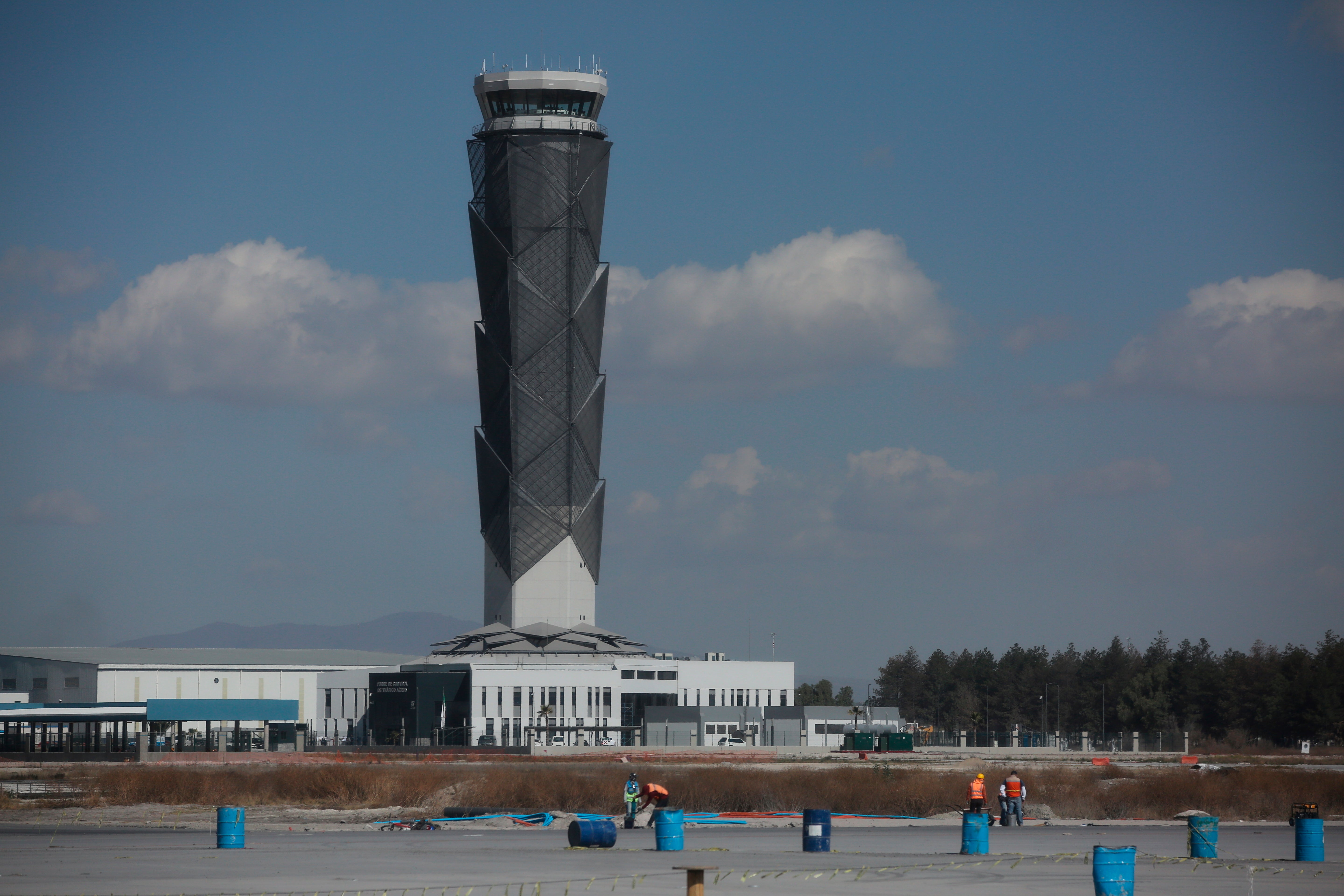Concerns raised over management of Mexico City's airspace
Pilots and airlines have expressed concerns over an increase in dangerous incidents in Mexico City’s airspace since it was redesigned to accommodate a second airport

Your support helps us to tell the story
From reproductive rights to climate change to Big Tech, The Independent is on the ground when the story is developing. Whether it's investigating the financials of Elon Musk's pro-Trump PAC or producing our latest documentary, 'The A Word', which shines a light on the American women fighting for reproductive rights, we know how important it is to parse out the facts from the messaging.
At such a critical moment in US history, we need reporters on the ground. Your donation allows us to keep sending journalists to speak to both sides of the story.
The Independent is trusted by Americans across the entire political spectrum. And unlike many other quality news outlets, we choose not to lock Americans out of our reporting and analysis with paywalls. We believe quality journalism should be available to everyone, paid for by those who can afford it.
Your support makes all the difference.Pilots and airlines have expressed concerns over an increase in potentially dangerous incidents in Mexico City’s airspace since it was redesigned to accommodate a second airport, including alerts that planes could crash unless action was taken.
In the past year, there were at least 17 incidents of ground proximity warning system alerts for planes approaching Mexico City's Benito Juarez International Airport, according to a letter the International Air Transport Association, which represents some 290 airlines, wrote this week to the head of Mexican Airspace Navigation Services, the government agency responsible for managing the airspace.
“As you know, these alarms, without the quick action of the flight crew, can lead to a scenario of controlled flight into terrain, CFIT, considered by the industry to be one of the highest risk indicators in operational safety, and with the highest accident rate, as well as fatalities,” the letter said. The Mexican agency referred a request for comment to the transportation ministry Friday.
The association said the main factor in the incidents appeared to be air traffic controllers not using standard phraseology in their communications with flight crews. It requested a meeting with Mexican aviation authorities as soon as possible.
The following day, the International Federation of Air Line Pilots’ Associations issued a safety bulletin drawing attention to such incidents, as well as planes landing with very low fuel after being forced to circle unexpectedly and diversions to other airports because of excessive delays. It also cited “significant” ground proximity warning systems alerts, including a near collision.
The incidents follow the opening of the new Felipe Ángeles International Airport north of Mexico’s capital in March. The converted military air base was one of President Andrés Manuel López Obrador’s signature projects after he cancelled the previous administration’s partially constructed airport, which was supposed to replace Benito Juarez, because it was too lavish.
There were concerns at that time that López Obrador’s plan to operate two airports simultaneously could create problems over the capital. The International Air Transport Association's letter said the incidents had been reported "since the implementation of the first phase of the redesign of the Mexico Valley airspace.”
The pilots' federation bulletin also mentioned air traffic controllers not using standard phraseology as a factor in the incidents and said, “It would appear that with the opening of this newly converted airport, (air traffic control) has apparently received little training and support as to how to operate this new configuration in the airspace.”
“Crews have received clearances that do not adhere to terrain avoidance restrictions” on routes used to approach the Benito Juárez airport, the bulletin said.
On Wednesday, Transportation and Infrastructure Undersecretary Rogelio Jiménez Pons told local media the government has decided to reduce the number of flights allowed to land at the old airport by 20 percent. He made no mention of the safety bulletin or the reported incidents.
The reduction is to start in July, and could force about 10 daily flights to the new airport. The government had already said any new flights scheduled into Mexico City will have to use Felipe Ángeles, but the new reduction applies to some existing routes.
Jiménez Pons said the old airport had to reduce traffic because it is overloaded and needs updates. He said airlines can choose to go the Felipe Ángeles terminal or to an even more distant, largely unused airport in city of Toluca over a mountain pass to the west.
The Mexican pilots association, a member of the international federation, said Thursday that it had requested a meeting with Mexican aeronautical authorities to discuss the situation and share the experiences of its pilots.
It called on Mexican Airspace Navigation Services “to address Mexican and foreign pilots’ reports, seeking in the first place the safety of air operations and the efficiency of our airspace.”
One year ago, U.S. regulators downgraded Mexico’s aviation safety rating, a move that prevents Mexican airlines from expanding flights to the United States.
The Federal Aviation Administration had found that Mexico’s ability to oversee its airlines falls short of standards set by a United Nations group called the International Civil Aviation Organization. Those standards cover a broad range of issues including the regulator’s technical expertise, inspection procedures and record-keeping.
The International Air Transport Association letter alluded to that situation, noting that these incidents “without a doubt do not help in the process in which Mexico finds itself immersed, trying to recover its Category 1 (aviation safety rating) that was withdrawn by the FAA last year.”
Mexico’s National Air Transport Chamber called on the country’s aviation authorities “to address with the highest priority the reports that have been made to them for months and make known the diagnosis and the measures to mitigate the corresponding risks.”
__
AP writer David Koenig in Dallas contributed to this report.